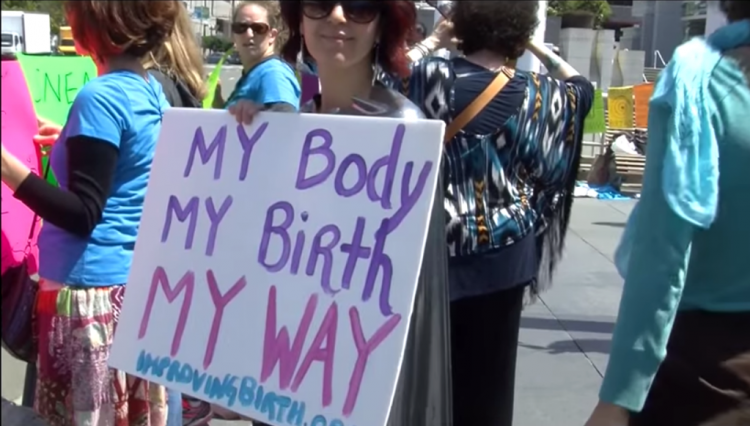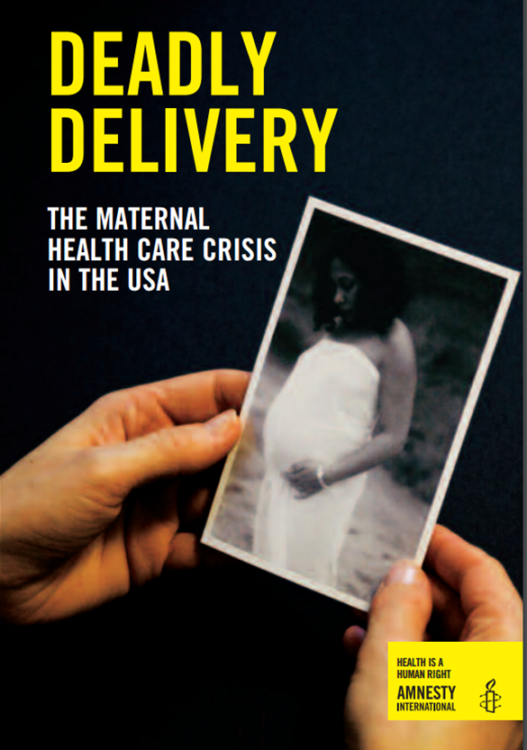Kindred Media and Community, and its parent nonprofit, Kindred World, are proud partners with the BirthKeeper Coalition. We hope you will attend, support or share the news of this much-needed, groundbreaking event in our nation’s capital from May 14-15, 2016. Register here. This letter from the editor appeared in the May 2016 issue of Kindred’s E-Newsletter.
Dear Kindred Reader,
Oh my gosh! Sign me up! Where is this million-dollar industry supporting the values of natural and conscious parenting in the United States? We need funding people! Where is it?! The well-known Dr. Amy, Ivy League Defender of the Status Quo, published her book Push Back: Guilt in the Age of Natural Parenting last month and the Amazon description proclaims it is a “headline-making expose that shines a light on the natural parenting movement and the multimillion-dollar industry behind it.”

I won’t need to feel guilty either because the nonexistent million-dollar natural parenting industry facing down the very real billion dollar medicalized birth industry and formula companies have got this, right? We’re there, let’s partaaay!
And isn’t is just INTERESTING that days before a coalition of national nonprofits, professional organizations and activists descend upon America’s capital for a groundbreaking activist march, speaker summit and National Press Club conference the Washington Post runs Dr. Amy’s blog on “How the natural birth industry sets mothers up for guilt and shame.”
No mention in the grammar-challenged headline of what American mothers are “set up” for: a seven times greater death rate than their Irish and Italian counterparts and a maternal mortality rate that has more than doubled in the past few decades. Dr. Amy’s opening paragraph hails from the Status Quo Defender Projection Playbook with it’s predictable “Shut Up!” message to anyone who thinks birth matters: I had four kids in 20 years, writes the Harvard OB, and “I think about those experiences rarely, if ever… those acute hours quickly faded into insignificance.”
Hear that?? Insignificance! So listen up all you researchers, scientists and so-called wise mommas, Dr. Amy, a HARVARD OB, says you needn’t keep generating any more insights, testimonies or studies into how human conception, birth and child-rearing affects the health of the mother, child and community for a lifetime. No, no, no, that idea is a baseless money-maker and we natural and conscious parenting activists need to stop GUILTING mothers into reading anything like the insignificant, profit-driven report from Amnesty International’s Deadly Delivery: The Maternal Health Care Crisis In America (see facts from this report below).
Okay, so if you’re reading this, chances are you are well acquainted not only with Dr. Amy’s long record of defending the dominant medical model of birth and projecting the culpability of that model onto the Conscious Parenting Movement, but also with what is really playing out here, as we spend most of our time on Kindred discussing the Old Story, New Story and the Space Between Stories, which is where most of us find ourselves most days.
You also probably know how difficult it is to find the New Story covered in mainstream media. Here’s a fine example: A few months after the first BirthKeeper Summit in San Francisco last year, in an article downplaying the validity of the United State’s high maternal morbidity rate, Scientific America wrote:
“There is no charity walk to raise awareness about the 700 to 800 women that die each year during pregnancy or shortly after giving birth in the U.S. There are no dedicated colored-plastic wristbands. But statistics in recent years have revealed a worrisome trend: the rate of maternal mortality in the U.S. has more than doubled in the past few decades.”
There is NO charity walk? There IS a charity and it is doing more than walking and sporting toxin-loving silicone wristbands. The BirthKeeper Coalition is a nonprofit initiative and it is bringing together decades of organized efforts through a coalition to transform birth in America. This weekend, in the nation’s capital, the BirthKeeper Coalition will not only bring together researchers, practitioners and parents in a summit, they will also stage a National Press Club Conference, a Family Rising March, a My Sistas Keeper event for birth workers of color, and a sit down meeting with the American Congress of Obstetricians and Gynecologists, ACOG, on the Monday after the weekend’s events. The event is nearly free and you can register here (maybe for free if you ask)
Please consider attending, supporting and sharing information about this event with your social media and real life networks. As the embodiment of this New Story, the one that believes it is possible to create a culture of connection, compassion, intelligent institutions (that might be an oxymoron), empowered families and sustainable living systems, I continually stand in awe of collaborative commitment to change, even when we acknowledge the generations it may take before cultural change appears. Sorry, Dr. Amy; we will not shut up or give up. American mothers and babies deserve better.
And honestly, if you know where Kindred can get in on that million-dollar natural parenting industry action, please email me and let me know!
Blessings,
Lisa Reagan
Kindred’s Editor
Birth In America Facts
From State of the World’s Mothers Report 2013
In the industrialized world, the United States has by far the most first-day deaths. Only 1 percent of the world’s newborn deaths occur in industrialized countries, but the newborn period is still the riskiest time, no matter where a baby is born, with the first day being the riskiest time of all in most, if not all, countries. The United States has the highest first-day death rate in the industrialized world. An estimated 11,300 newborn babies die each year in the United States on the day they are born. This is 50 percent more first-day deaths than all other industrialized countries combined. When first-day deaths in the United States are compared to those in the 27 countries making up the European Union, the findings show that European Union countries, taken together, have 1 million more births each year (4.3 million vs. 5.3 million, respectively), but only about half as many first-day deaths as the United States (11,300 in the U.S. vs. 5,800 in EU member countries).
Found here: http://www.savethechildrenweb.org/SOWM-2013/files/assets/basic-html/index.html#page1
From Amnesty International’s Deadly Delivery: The Maternal Health Care Crisis In The USA Report:
 “Blaming women for the rise in maternal mortality, e.g., they need to take better care of themselves, will not solve the current issues. Indeed, the bulk of the solutions that will have the greatest impact are those solutions that occur at the system-level beyond the control of the individual woman.” Debra Bingham, Former Executive Director of the California Maternal Quality Care Collaborative, 28 February 2010
“Blaming women for the rise in maternal mortality, e.g., they need to take better care of themselves, will not solve the current issues. Indeed, the bulk of the solutions that will have the greatest impact are those solutions that occur at the system-level beyond the control of the individual woman.” Debra Bingham, Former Executive Director of the California Maternal Quality Care Collaborative, 28 February 2010
- According to new UN data, maternal mortality in the US has worsened, falling from 41st to 50th in the world. In other words, women in the US face a greater risk of maternal death than in 49 other countries.
- Over 4 million women in the US give birth each year, and the hospital bills for this care reached $98 billion. International Federation of Health Plans data indicated that the US spends twice as much as any other country surveyed on the fees charged by maternal health care providers.
- The US maternal mortality ratio, at 12.7 (deaths per 100,000 live births), was 3 times as high as the Healthy People 2010 goal, a national target set by the US government. • The maternal mortality ratio for American Indian/Alaska Native women was 4 times higher than the 2010 target and for African American women was 8 times higher than the 2010 target.
- Women living in low-income areas across the US were twice as likely to suffer a maternal death as women in high income areas. • The US cesarean rate rose for the 13th consecutive year to reach an all-time high of 32.9% in 2009,6 more than double the WHO recommended range of 5% to 15%.
- New analysis shows that the states reporting higher than average cesarean rates (over 33% of births) had a 21% higher risk of maternal mortality than states with cesarean rates less than 33%
- The maternal mortality ratio31 in the US continues to lag far behind the Healthy People 2010 goal, established by the US government, to reduce maternal mortality to 4.3 deaths per 100,000 live births. According to data released in 2010, the maternal mortality ratio was 12.7,32 three times as high as the Healthy People goal.
- A report issued by the Centers for Disease Control and Prevention (CDC) in 2010 found that pregnancy-related deaths (deaths related to pregnancy or childbirth in the year following pregnancy or birth) had reached their highest level in a 20 year period.
- New government data shows that for 2005-2007, the maternal mortality ratio (deaths per 100,000 live births) was highest among non-Hispanic black women (34.0), followed by American Indian/ Alaska Native women(16.9), Asian/Pacific Islanders (11.0), non-Hispanic whites (10.4), and Hispanics (9.6).
Found at: https://www.amnestyusa.org/sites/default/files/deadlydeliveryoneyear.pdf
From Disparities and Inequities in Maternal and Infant Health Outcomes
Maternal and infant health inequities and disparities are serious public health concerns that have many social and economic implications, such as poor health outcomes and increased direct and indirect healthcare costs. Maternal and infant health disparities are diverse and can exist among different groups, including insured and uninsured populations, urban and rural communities, privately and publicly insured individuals, and racial or ethnic minorities. Health disparities are influenced by various factors, such as socioeconomic status (SES), educational attainment, discrimination, biologic and genetic characteristics, behavior, environment, and quality of care.


